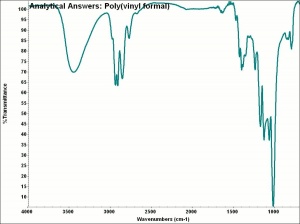Difference between revisions of "Polyvinyl formal"
Jump to navigation
Jump to search
m (fixed internal link) |
|||
| Line 21: | Line 21: | ||
== Sources Checked for Data in Record == | == Sources Checked for Data in Record == | ||
| − | * | + | * G.S.Brady, ''Materials Handbook'', McGraw-Hill Book Co., New York, 1971 Comment: p. 848 |
| − | * | + | * Theodore J. Reinhart, 'Glossary of Terms', ''Engineered Plastics'', ASM International, 1988 |
| − | * | + | * Richard S. Lewis, ''Hawley's Condensed Chemical Dictionary'', Van Nostrand Reinhold, New York, 10th ed., 1993 |
| − | * | + | * Conservation Materials Ltd., Catalog |
[[Category:Materials database]] | [[Category:Materials database]] | ||
Revision as of 16:37, 20 May 2020
Description
A Thermoplastic resin made by the condensation of Polyvinyl alcohol with Formaldehyde. Polyvinyl formal is a colorless, flexible tough solid. It can be molded, extruded, or cast and is resistant to greases, oils, and alkalis. It is used as a structural adhesive for bonding aircraft components.
Synonyms and Related Terms
poly(vinyl formal); polivinilformaldehido (Esp.); Formvar; polyvinyl acetal
Other Properties
Soluble in glacial acetic acid, Cellosolve acetate, chloroform, diacetone alcohol, phenol, pyridine, THF, toluene.Resistant to alkalis, greases and oils.
| Density | 1.3 |
|---|
Sources Checked for Data in Record
- G.S.Brady, Materials Handbook, McGraw-Hill Book Co., New York, 1971 Comment: p. 848
- Theodore J. Reinhart, 'Glossary of Terms', Engineered Plastics, ASM International, 1988
- Richard S. Lewis, Hawley's Condensed Chemical Dictionary, Van Nostrand Reinhold, New York, 10th ed., 1993
- Conservation Materials Ltd., Catalog
